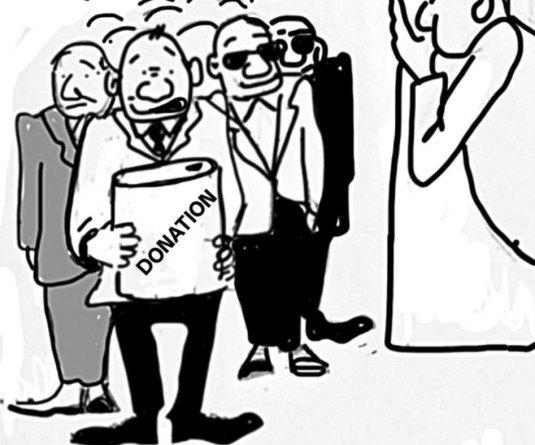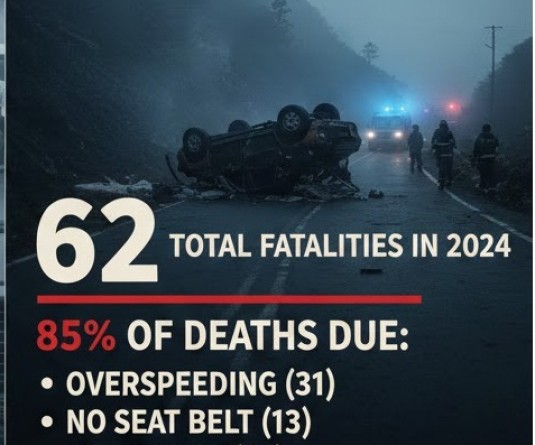Source: Periodic Labour Force Survey (JULY 2020 - JUNE 2021), NSO, MoSPI, GoI.
Unemployment rate increases as one attains higher educational level, highlights MoSPI survey
Moa Jamir
Dimapur | June 19
Apart from having the highest unemployment rate in India at 19.2%, Nagaland is also facing a bigger challenge of giving employment opportunities to its ‘educated persons,’ highlighted the annual Periodic Labour Force Survey (PLFS) for 2020-21 report.
The report for July 2020 to June 2021 released on June 14 showed that nearly one-third of ‘educated persons’ in the state were unemployed. The unemployment rate showed an increasing trend as the level of education increased.
Specifically, it stated that the unemployment rate among the ‘educated’ (15 years and above) was 30.8% against the All-India average of 9.1%.
Corresponding with the State’s overall unemployment rate, the ‘educated’ unemployed rate in Nagaland was highest among the States and Union Territories (UTs) in India.
The survey carried out by the National Statistical Office (NSO) under the Union Ministry of Statistics and Programme Implementation (MoSPI), defined educated persons as “those who have attained the educational level of secondary and above.” In terms of what the survey considered as “highest level of education successfully completed,” it may be understood as matriculation.
In a concerning note, however, the reported highlighted that the unemployment rate increased considerably as one climbed the educational ladder.
Accordingly, while the unemployment rate for ‘higher secondary’ was more or less same with secondary at 29.3%, it jumped to 40.7% among graduates.
The unemployment rate was highest among those with educational level given as ‘Post Graduate and Above’ at 45.2%.
During the same period, the national average of unemployment for graduates and post graduates and above were 15.5% and 12.5 respectively.
It must be noted here that cohorts from ‘graduate and above’ can be taken as ‘true’ reflection of the unemployment as most people spent the secondary and higher secondary-level completing their schooling.
According to latest Nagaland Economic Survey 2021-22 published by the Department of Economics & Statistics, there were 77,746 applicants in the employment exchanges on December 31, 2021. Out of this, 23,621 were graduates and 6,303 postgraduates.
Interestingly, unemployment among those with ‘diploma or certificate' course were given as zero, while it was 14.2% nationally.
There was also zero unemployment rate among ‘not literate’ category in Nagaland against 0.4% national average while it was a miniscule 1.2% for those who studied till primary level. (See Graph).
This could be due to the fact that as per the samples collected by the survey, only 3.7% of persons in the age 15 years and above in Nagaland were estimated as ‘not literate’ against the all-India level of 24.1%.
Overall, the literacy rate for persons in the 5 years & above age bracket was estimated to be 96.7 % in Nagaland against national average of 78.6%.
The high rate of unemployment among the educated could be mostly attributed to lack of sufficient jobs, both in absolute and relative terms, commensurating with their degrees as self-employment and casual labour are counted in the survey parameters of employment. Another reason could be lack of skill development and quality of education or simply waiting for government sector, as the unemployment rate among diploma and certificate (mostly skilled-based) is shown to be nil.
As reported earlier by The Morung Express, a total of 55.2% in 15-29 years age group, termed as youth in the survey, were unemployed during July 2020 to June 2021 in Nagaland against the all India rate of 12.9%.
Unemployment rate under PLFS
As per the report, estimates relating to unemployment rate in PLFS are obtained by ‘usual status’ combining usual principal status (ps) and the subsidiary status (ss) and current weekly status approach (CWS).
The Unemployment rate (UR) is defined as the percentage of unemployed persons in the labour force (or “persons who were either 'working' (or employed) or 'seeking or available for work' (or unemployed)” usually in the 15 years and above age category.
The labour force according to the usual status (ps+ss) is obtained includes the persons who either worked or were seeking/available for work for a relatively long part of the 365 days preceding the date of survey and also those persons from among the remaining population who had worked at least for 30 days during the reference period of 365 days preceding the date of survey.
Under CWS, it is derived by considering those who “worked for at least 1 hour or was seeking/ available for work for at least 1 hour on any day during the 7 days preceding the date of survey”.






